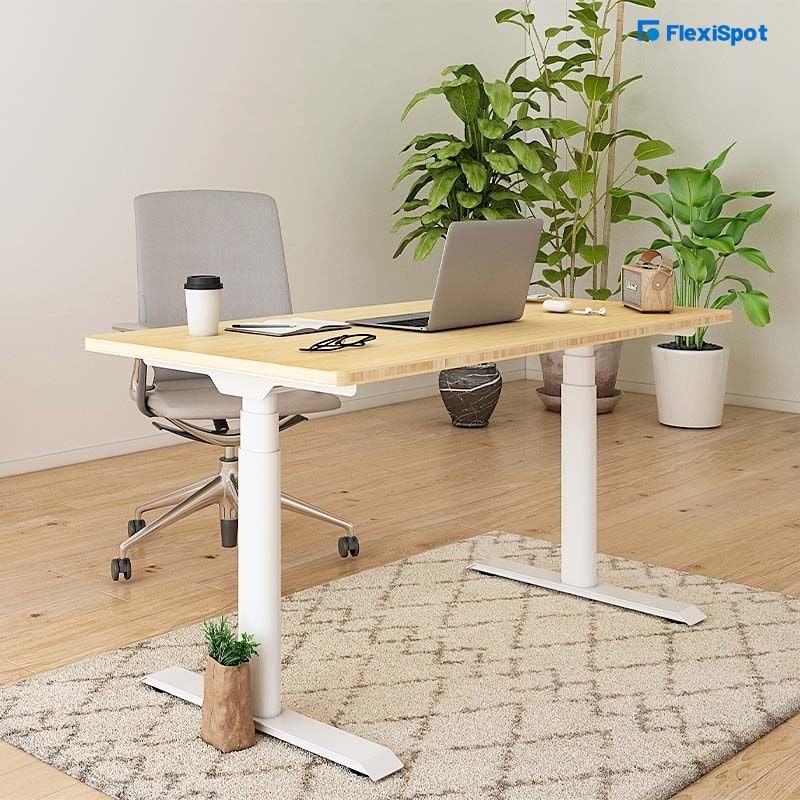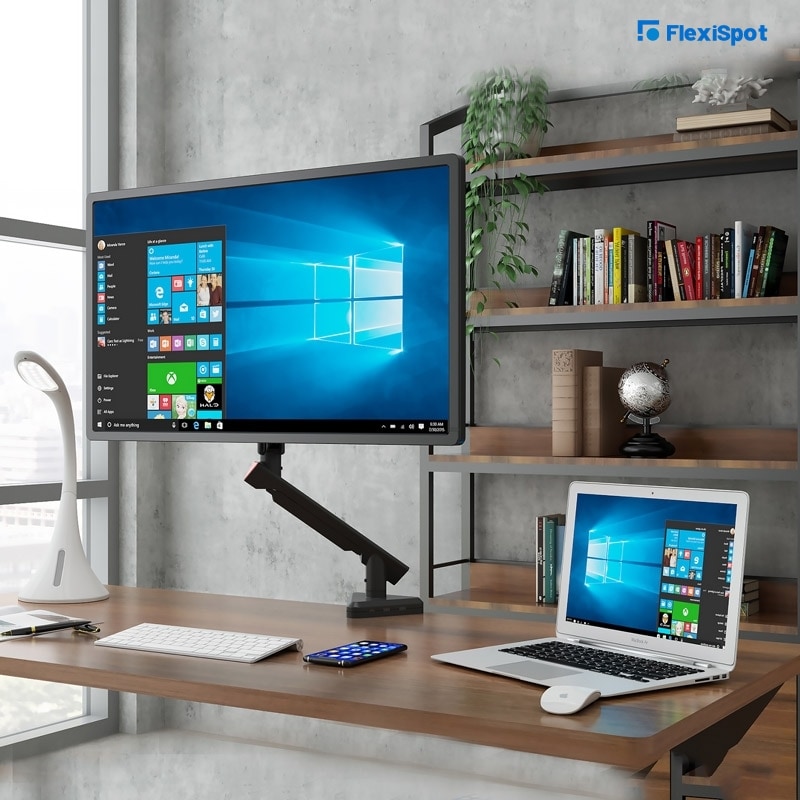Laptops are an integral part of most people’s lives regardless of their professions. Whether in engineering, business, composition, production, or even medicine, these portable computers play a crucial role in one's daily life. But despite the frequent use, most people, if not all, overlook the need and importance of using a laptop in a healthy manner. Yes, that's right! There is a healthy way to work on a laptop.
When individuals don't follow it, they put themselves through a host of health issues, such as musculoskeletal disorders, back and neck pain, etc. If you want to save yourself from the repercussions of unhealthy laptop use, be sure to act in accordance with the following guide.
The Do's and Don’ts of Ergonomic and Healthy Laptop Use
To make things easy to remember, we have divided our guide into dos and don'ts. Read through them to find out how to use your laptop ergonomically.
Do Get Ergonomic Equipment
The first thing you need to do is get ergonomic equipment for your workstation, which can include a lot of things, such as chairs, tables, alternative mouse devices, laptop stands, and many others. But the most important of them all is an ergonomic office chair and desk.
Office Chairs
Since most people prefer to sit while working on their laptops, they need to have suitable chairs to support their spine and neck; otherwise, they can be in a lot of pain. A decent office chair is one that has thick cushioning, a headrest, lumbar support, and a provision for height adjustment. Of course, there can be other features, but the ones mentioned are critical as those help people maintain a proper posture.
Without the right chair, laptop users are likely to slouch, bend their necks forward, and put pressure on their legs, among other things.
Desks
As we have established, having the right chair when using a laptop while seated is crucial. But if you don’t want to remain seated for hours on end, you can go for a standing desk. It is an incredible option if you don’t want to adopt a sedentary lifestyle. Furthermore, you can go for a dual function desk, i.e., one that allows you to sit and stand as per your need and mood, such as FlexiSpot’s Studio Standing Desk.
Speaking of desks, it’s essential to know what makes a good studio desk or any other model for that matter. Any table that offers ample tabletop space, height adjustment, and has sturdy construction makes a suitable workstation.
It must be noted that when bringing in a table in your office or studio, placement is critical. Many people don’t pay attention to things like where should a home studio desk be placed or where an office desk should be placed. That is an important consideration as it will facilitate you while working. As a general rule of thumb, set up your workstation against a window so that you don’t get a glare on your monitor. In simple words, the front of your desk should be facing away from the window and not towards it.
In a nutshell, the first guideline of ergonomic and healthy laptop use is having the best-suited furniture and ensuring that its placement is correct.
Don’t Keep Your Laptop on Your Lap
The biggest convenience of using a laptop is that people don't have to remain in one place while working. That means individuals can work literally anywhere they want, with or without a desk. Due to this, they may have to keep their laptop on their lap, which can be disastrous for their posture.
When you place your laptop on your lap, you have to droop in order to type and look at the screen. And that puts immense pressure on your neck and back, not to mention distorts the shape of your spine. If you don't want to strain your body, keep your computer away from your lap.
That said, let's assume you need to work on the commute to the office, and you have no other option than to put the laptop on your lap. In such a scenario, use your bag or briefcase to place the computer. You can also stack a few books on your lap and put the laptop on top.
Long story short, always keep your laptop in such a way that the screen is on your eye level.
Do Take Breaks
Staying in one position can be bad for the body. It can stiffen muscles and put pressure on certain parts of the body. To avoid soreness in your muscles, take frequent breaks, ideally every half an hour or so.
Additionally, if possible, stretch when you can to relax your muscles. You can do it while seated as well. Here are the moves you can do in a chair.
Neck stretch
Shoulder stretch
Arm stretch
Calf stretch
Don’t Use a Sofa or Arm Chair
Many people find sofas and couches more comfortable to sit on when using a laptop. However, those may not be the best sitting arrangement for your back and neck.
Sofas are typically built to contour according to the sitter's body. This means you cannot stay erect when sitting on them. Resultantly, your shoulders will droop, and you will bend your neck forward and deform the shape of your spine.
Our spine is only slightly curved, but when we sit in an improper position, its curve can deepen, resulting in a hunch. Therefore, use an ergonomic chair to sit straight with your feet parallel to the floor.
Do Consider Getting a Bigger Screen
A laptop's size is what makes it portable; however, in some cases, it can be damaging to a user's eyes. Since the screen is not too big, a person may have to bend forward and strain their eyes to make out what's written before them. Such close proximity to the monitor is bad for the eyes.
So, think about investing in a bigger monitor to keep your eyes from straining. If that’s not possible, you can zoom in to be able to read better instead of dropping your neck.
Don’t Remain In One Position for Long
As already mentioned, sitting for a long duration is not good for the body. It can lead to disrupted blood flow to the lower body, which causes the user’s feet to fall asleep.
Moreover, your muscles get sore and may even start tingling. All this can be avoided by changing positions every hour.
Similarly, standing for hours is not the best for your body. It can put stress on your legs as they will support your entire body weight. Therefore, you must switch between standing and sitting frequently.
Shifting stances is where a standing desk can come in handy as you can use it on different height levels. That is, when you are sitting, you can keep it low, and when you want to stand and work, Increase the height.
Bonus Tip
If you tend to get too involved while working and forget to take breaks, you should set reminders on your phone. That way, you will know when it's time to switch positions. And while you are at it, consider stretching in between switching.
Do Remain Mindful Of Your Posture
Despite knowing the importance of having the proper posture, many people forget about it during work and end up slouching. Even if you start your day by sitting with your back straight, neck erect, and feet parallel to the ground, the chances are a few hours later; you will be slumping.
Therefore, remaining mindful of your body's position at all times is critical. Whenever you find yourself loosening up and dropping your shoulders, get up from your seat. Walk a bit to get the blood going and relax the muscles. Once you do that, your itch to let go of your posture will go away.
If you are unsure what the correct posture looks like, here is a detailed run-down for you.
Sit with your spine straight against the backrest.
Be sure your neck is not hanging forward. You can also place your head on the headrest if possible to prevent hunching.
When you keep your neck upright, your ears will fall right above your shoulders- you can use it as a sign of having your neck in the correct position.
Place your feet flat on the floor. Keep some space between your knees and the edge of your seat. If you don't do that, the blood flow to your lower body will be hindered and cause your feet to fall asleep.
Adjust the height of your chair so that your feet lie on the ground. If you have a footrest, use it.
Keep your laptop at arm's length.
The screen should be on your eye level. Use a laptop stand to bring your screen higher so that you look straight ahead when working.
Your forearms should be parallel to the desk, and when you type, they shouldn't strain.
Ending Note
Laptops are not inherently harmful to our body. It’s how we use them that makes all the difference. So, make sure you keep ergonomics in your mind when using a laptop.








